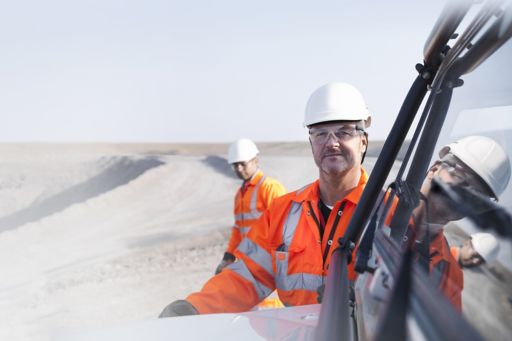Gaining insights from your data really means obtaining clear visibility of all your data in your business. Is it telling you to grow, explore a new opportunity, or to curtail and moderate activity? Good data coming from across your business allows you to make sound business decisions and chart a confident course for the future.
| Darren Covington takes a look at how you can use data to inform business planning – insights from Data and Digital Transformation in the Mid Market, KPMG's survey of mid-market business leaders. |
Mining companies are a great example in the way they utilise data to analyse throughput, people and assets and consolidate all this information to glean a real time overview of their supply chains. This ensures they can maximise the amount of commodity delivered to the port, as their profitability is based on pricing and volume.
Resource companies are looking at conditions both within the business and those that affect them externally. Global market conditions for resources are important as regards both pricing and volume. So, If the price is currently low, insights will allow companies to judge whether they should reduce volume until market prices rise again. This also drives shareholder value.
COVID as a game changer
It’s the same for retail. Just-in-time technology and consumer demands are key drivers. But COVID-19 has created huge problems when it comes to supply chains. Let’s take road bikes. There’s been an uptake of orders for bikes during the pandemic, as more and more people increase their exercise regimes to try and stay healthy in lockdown. Often, families cycle together, meaning more than one bike is needed. Bikes are often manufactured in Australia. But many spare parts, such as batteries and electronics contain carbon, which has been hard to source because of restrictions on shipping due to COVID-19.
Spare parts are manufactured in four key locations: China, Taiwan, Europe and USA. If there’s not enough carbon for production, the parts don’t get made. This has given rise to competing interests, as large manufacturers who also need carbon for their spare parts, such as aircraft and car builders, jostle for position, drive the price of carbon up, and frequently win out over smaller companies who simply can’t compete.
The result is that there is reduced bike production and a supply shortage as consumer demand continues to grow. Currently, if you want to buy a road bike, there’s a six month waiting list.
Could data insights have helped in this instance? Yes. Bike manufacturers could have scrutinised their production chains during the first wave of COVID, observed the rise in sales, increased their scale of manufacturing and ordered more raw materials earlier. It’s a clear example of how retailers could have derived valuable insights from the visibility of data.
Visualising data for success
The Australian business community’s roadmap out of lockdown is also an excellent example of visualising data use. We’re looking at trending analysis, machine learning and modelling, and intelligence of that data to provide a way forward. Corporates are exploring how to open up offices safely to resume doing business under ‘COVID Normal’ protocols. And data will also outline the impacts for the business, and provide intel on how to connect both with clients and employees under these new conditions. This has to be carefully planned – the data on where you are today, will point to where you’ll be tomorrow.
Of course, sometimes data is ignored, with dire consequences. Perhaps one of the most famous examples is Kodak, which ignored data showing that more and more consumers were moving away from film and picking up digital cameras. But Fuji pounced on the trend and the rest is history.
Heeding the value of data is also true for mid-market organisations. As markets change, they need to be able to manoeuvre quickly and adapt. In the automotive industry, for example, cars are frequently purchased and configured online. Consumers want a personalised experience and a car that is ‘made to measure’ to their specifications. Buying behaviour has changed, so vehicles need to reflect additional consumer requirements. And these changes have all been pinpointed by data.
Challenges for the mid market
The challenge for many smaller organisations is that they’re pulling static data out of their systems - information that captures a snapshot in time but does not accurately reflect the business as a whole. What you need is real time data, the ability to visualise true business insights that are a lot more accurate.
Mid-market organisations need to get their infrastructure right first and that can be difficult due to the legacy systems that they have previously put in place. Smaller companies should work with the right people to reconfigure and integrate their systems, and connect these to analytic platforms. This is best achieved through a Managed Service that can provide an enterprise solution to integrate data and applications, allowing organisations to be more agile.
Such steps will allow them to become truly digital businesses. And realising that ambition will be the subject of our next blog.

What’s Driving Mid Market Transformation?
Find out in the Data and Digital Transformation in the Mid Market Report 2021
Register to receive PDF







